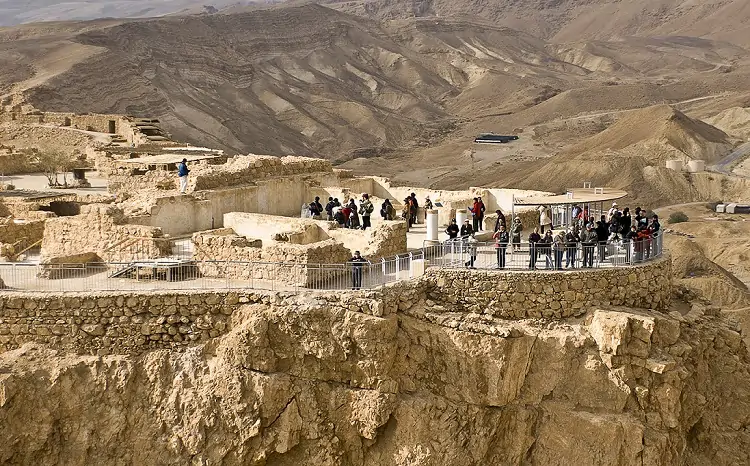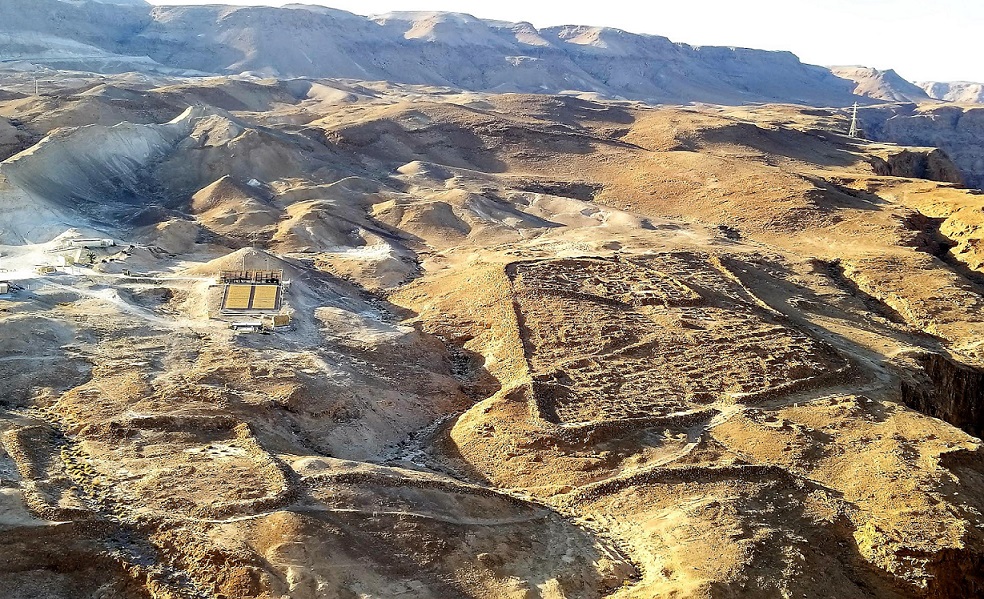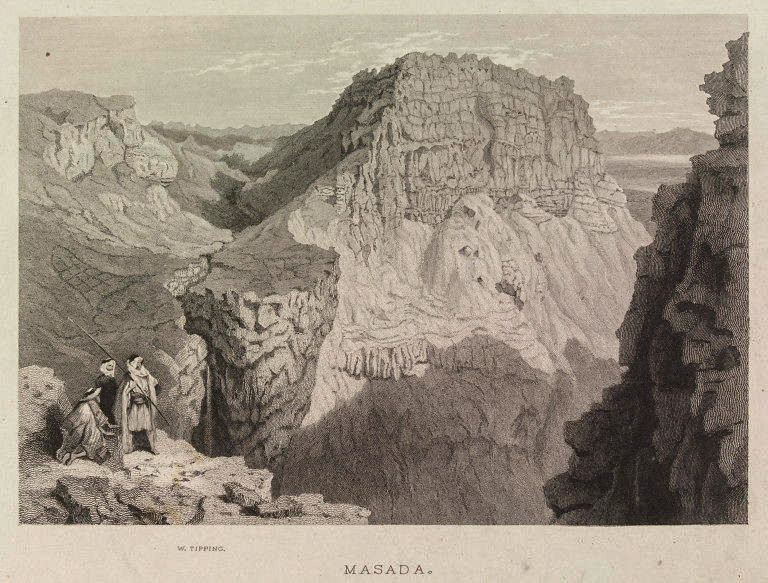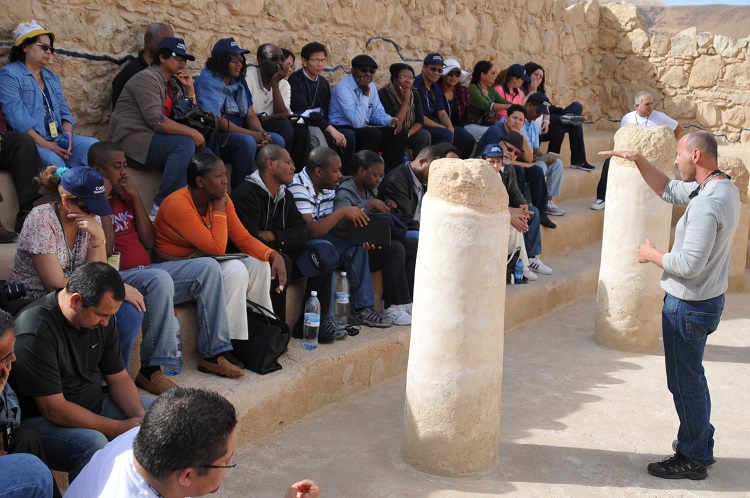
Masada Fortress – A Brief History
Much of what we know about the history of Masada comes from writings of the 1st-century historian Flavius Josephus. Masada, in Hebrew – Metzuda meaning “stronghold”, was first fortified by Alexander Jannaeus, the second king of the Hasmonian Dynasty which ruled over Judaea from 103 to 76 BC. When Judaea became a Roman client state and Herod the Great was installed as ruler in 37 BC, it marked the end of the Hasmonean Dynasty and the beginning of Herodian rule. Once Herod took control of Judaea he saw strategic advantages in the mountaintop fortress as a refuge and safe haven in case of Jewish revolt or enemy attack. Herod built his palace complex consisting of two palaces, the Western Palace and the Northern Palace, constructed in the classic style of the early Roman Empire. He also built barracks, storerooms, swimming pools, mikvehs, courtyards, terraces, cisterns, armory, a sophisticated water system and 13-foot-high casement around the plateau with towers. According to Josephus, Herod constructed his palace complex between 37 BC and 31BC. King Herod himself never had to seek refuge at his desert palace fortress. He died a very painful death in 4 BC from health complications believed to be related to kidney disease and a rare form of gangrene.

In 66 AD, a group of Jewish Zealots known as Sacarii “dagger men”, led by Eleazar Ben Yair, overcame the Roman legion at Masada and took refuge during the First Jewish-Roman War. Later, after the destruction of the Jewish Temple in 70 AD even more Jewish rebels fled to the desert fortress. Once the insurrection was quelled, Romans, under the command of Flavius Silva, focused on freeing Masada of its rebel inhabitants. It was the last Jewish stand against the Romans. According to Josephus, Roman soldiers built a siege ramp up to the walls of the fortress and a giant siege tower with battering ram. In the spring of 73 AD, they successfully breached the fortifications, however, when they went in they found the Jewish rebels had set fire to buildings they had lived in and the leaders, after killing their families, committed suicide by lottery.
Prior to modern times, Masada was last occupied by a small cavern church and the associated monastery of Marda (Aramaic for “fortress”) during the 6th century. References to which can only be found in the biographies of St. Sabbas and St. Euthymius.
Masada was left untouched for centuries until being rediscovered by two Americans – biblical scholar, Edward Robinson and his assistant, Eli Smith, during a visit to Ein Gedi in 1838. Four years later, American missionary Samuel Wolcott and British artist William Tipping climbed up to the rugged mountain-top.

Extensive archaeological excavations didn’t take place until over a hundred years later! In 1963, Israeli archaeologist Yigael Yadin led the excavation. Due to its remote location Masada had been left untouched for almost 2000 years. According to Wikipedia, “In an area in front of the Northern palace, 11 ostraca were discovered, each bearing a single name. One reads, Ben Ya’ir.” – possibly referring to Eleazar Ben Ya’ir, the commander of the Sicarii rebels. It’s believed these pottery shards were the lots used by the Jewish defenders during the Roman siege. Other finds at Masada include Jewish coins, a sandal, clothes, pottery and the biblical scrolls of Deuteronomy, Ezekiel, Leviticus and the Psalms.

If you’ve visited Masada within the last decade, you’ve probably seen several of the ancient buildings have been restored, including frescoes in both palaces, the synagogue, and storehouses. A partial reconstruction of the bathhouse in the Northern Palace shows the Roman hypocaust heating system used to warm the bathhouse.
Not only is it an incredibly interesting place to visit, Masada’s rugged and majestic beauty is a sight to behold. There’s nothing like it in the world. In 2001, Masada was declared a UNESCO World Heritage Site and has become one of Israel’s most popular sites in the country to visit.
A Glimpse of Masada, a video from the State of Israel’s official YouTube Channel.
I hope you’ve enjoyed learning about King Herod’s Masada Fortress. If interested, you can also read about King Herod’s enormous construction project at Caesarea Maritima.
Feature photo by Itamar Grinberg for IMOT.
